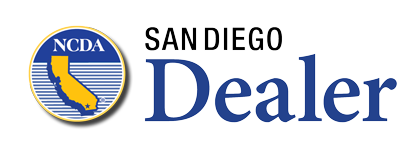As of April 17, 2020, Cal/OSHA had received over 1,500 complaints about employers who allegedly failed to provide proper protection during the ongoing pandemic related to the COVID-19 crisis. OSHA’s investigative powers are limited in its ability to fully investigate all these complaints. Cal-OSHA Reporter noted that in the first quarter of 2019, OSHA had investigated only 488 complaints. For 2020, the number of investigations will likely increase.
WHAT IS OSHA LOOKING FOR: The regulations that allow OSHA to investigate COVID-19 related complaints at auto dealerships are as follows:
Personal Protective Equipment: Personal Protective Equipment (PPE) requires using gloves, eye and face protection, and respiratory protection when job hazards warrant it. When respirators are necessary to protect workers, employers must implement a comprehensive respiratory protection program in accordance with the Respiratory Protection standard. Compliance requires an assessment of hazards and then proving proper PPE that addresses those hazards. PPE must be provided at no cost and employees provided with training in proper usage.
Hazard Communication Program: Employers must also protect their workers from exposure to hazardous chemicals used for cleaning and disinfection. Employers should be aware that common sanitizers and sterilizers could contain hazardous chemicals. Where workers are exposed to hazardous chemicals, employers must comply with this standard. Requirements include a written program, providing SDS, proper labels on containers and training on understanding the hazards related to chemicals in use.
General Duty Clause: The clause requires employers to provide each worker “a place of employment, which [is] free from recognized hazards that are causing or are likely to cause death or serious physical harm.” This is literally the catch-all provision that OSHA inspectors can use when no standard seems to be violated.
HOW TO HANDLE AN OSHA INSPECTION
Inspections are always conducted without advance notice. As a matter of policy, it is considered acceptable that the OSHA inspector may be kept waiting for 20 minutes prior to the inspection process beginning. Management can alert all responsible managers on the premises regarding the presence of OSHA and possible involvement in the inspection process.
WHAT DOES THE INSPECTION PROCESS INVOLVE?
Inspectors’ Credentials: When the OSHA compliance officer arrives at the establishment, he or she displays official credentials and asks to meet an appropriate employer representative. In the opening conference, the compliance officer explains how the establishment was selected and what the likely scope of the inspection will be. Take written notes during the opening conference and note the scope indicated by the inspector.
The compliance officer asks the employer to select an employer representative to accompany the compliance officer during the inspection. This person must stay with the inspector until departure from the company premises.
Limitation on OSHA Inspections: OSHA has limitations on inspection authority when visiting a place of employment. OSHA officers may try to expand the scope of inspection during the visit and, upon informed consent, may proceed to collect evidence that can significantly increase the violations detected and related penalties. Therefore, it is critical that the employer only provides OSHA with access to the location related to the underlying cause of inspection. Such boundaries must be established during the opening conference with the OSHA officer.
In a recent case, the U.S. Court of Appeals limited the scope of inspection available to OSHA. The case involved an employee who was injured while repairing an electrical panel. (See U.S.A. v. Mar-Jac Poultry, Inc., No. 16-17745 [11th Cir. 2018].) The employee was hospitalized, triggering a report to OSHA under federal regulations. OSHA inspected the facility and was granted access by the employer to look at the electrical panel area. Upon request, OSHA inspectors were provided Injury Log 300 by the employer. Upon review of Log 300, OSHA filed for a search warrant to investigate other locations at the plant where the injuries as reported on the Log 300 had occurred. The search warrant was granted. Subsequently, the employer filed a motion to vacate the search warrant, which was granted by the District Court. OSHA appealed the lower court’s decision to the 11th Circuit Court of Appeals.
The appeals court held that logs are merely records of injuries and not proof of OSHA violations. The mere existence of injuries, the court noted in this case, does not mean that injuries were caused by OSHA violations, nor do they justify the issuance of an administrative warrant for gathering evidence of OSHA violations. Recordkeeping regulations, as found in 29 CFR Part 1904, state that the recording of injuries on Log 300 does not mean that an employer is at fault or that an OSHA violation has occurred. This decision serves as guidance to employers to limit OSHA inspections to the complaint area. Unless the employer consents, a judicial warrant is required under the Fourth Amendment. If OSHA wishes to expand its search under information procured during the initial inspection, the employer should seek legal counsel to limit the inspection as available under the current law.
Walk-Through: Do not allow the inspector to veer in a direction not agreed in the scope at the opening conference! The compliance officer will observe safety, health conditions, and practices.
When a compliance officer finds a violation in open view, called the “plain view exception,” the scope of inspection now incorporates the plain view observation. The employer may shut down the area of the shop where the inspector will walk through. The compliance officer may wish to interview employees to get their opinion of the accident at the workplace.
Closing Conference: At the conclusion of the inspection, the compliance officer conducts a closing conference with the employer. The compliance officer gives the employer, and all other parties involved a copy of Employer Rights and Responsibilities Following an OSHA Inspection for their review and discussion. The compliance officer discusses with the employer all unsafe or unhealthy conditions observed during the inspection and indicates all apparent violations for which he or she may issue or recommend a citation and a proposed penalty. The compliance officer will inform the employer of appeal rights.
The office will request documents related to the inspection be mailed to OSHA in a specified time. Discuss the documents prior to submission with your counsel. At times, documents may be held back for reasons of privacy or relevance.
CITATIONS & PENALTIES?
Citations: OSHA citations inform the employer and employees of the regulations and standards alleged to have been violated and note the proposed length of time set to correct alleged violations. The employer must post a copy of each citation at or near the place a violation occurred for three days or until the violation is abated, whichever is longer. Certain notable violations for the general industry in California for 2010-2016 can be found at dir.ca.gov/dosh/citation.html.
Sam Celly of Celly Services, Inc. has been helping automobile dealers comply with EPA and OSHA regulations since 1987. Sam received his BE (1984) and MS (1986) in Chemical Engineering, followed by a J.D. from Southwestern University School of Law (1997). His newsletters can be accessed at.epaoshablog.com. Your comments/questions are always welcome. Please send them to sam@cellyservices.com.









